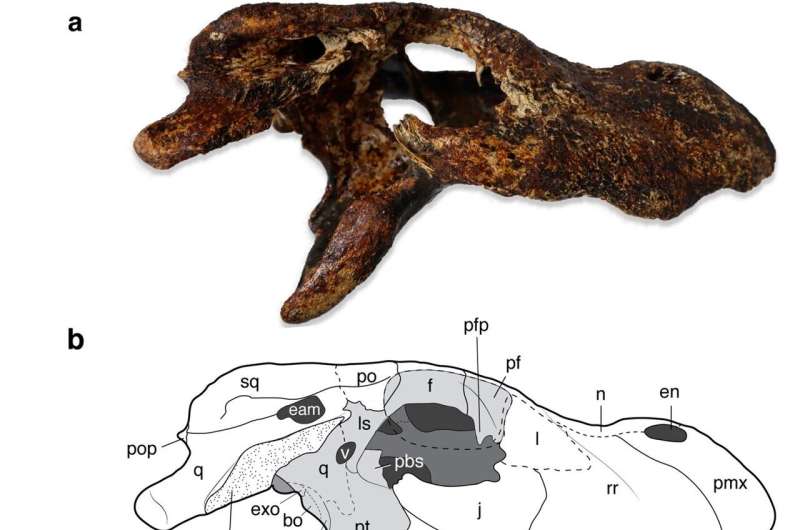This article has been reviewed according to Science X's editorial process and policies. Editors have highlighted the following attributes while ensuring the content's credibility:
fact-checked
peer-reviewed publication
trusted source
proofread
New ancient Asian alligator species identified

A new species of ancient alligator from Thailand that is closely related to the Chinese alligator (Alligator sinensis) is described in a study published in Scientific Reports.
Gustavo Darlim, Márton Rabi, Kantapon Suraprasit, Pannipa Tian and colleagues identified the new species by examining a near complete fossilized skull—which they date to younger than 230,000 years old—from Ban Si Liam, Thailand.
They have named the species Alligator munensis in reference to the nearby Mun River. The authors examined the remains and investigated the evolutionary relationships between A. munensis and other species by comparing its remains with those of 19 specimens from four extinct alligator species, as well as the living American alligator (Alligator mississippiensis), Chinese alligator and spectacled caiman (Caiman crocodilus) species.
They also reviewed previously published research on the skeletal characteristics of, and evolutionary relationships between, alligator species.
The authors identified several skull features that are unique to A. munensis, including a broad and short snout, a tall skull, reduced number of tooth sockets and nostrils that are positioned far from the tip of the snout. In addition, they note similarities between the skulls of A. munensis and the Chinese alligator, such as the presence of a small opening in the roof the mouth, a ridge on the top of the skull, and a raised ridge behind the nostrils.
They propose that the two species are closely related and may have shared a common ancestor in the lowlands of the Yangtze-Xi and Mekong-Chao Phraya river systems. They speculate that increases in the elevation of the southeastern Tibetan Plateau between 23 and five million years ago may have led to the separation of different populations and evolution of two separate species.
The authors observed that A. munensis has large tooth sockets towards the back of its mouth, which indicates that it may have possessed large teeth that could have been capable of crushing shells. As a result of this, they suggest that A. munensis may have eaten hard-shelled prey, such as snails, in addition to other animals.
The findings provide further insight into the evolution of Asian alligators.
More information: Gustavo Darlim, An extinct deep-snouted Alligator species from the Quaternary of Thailand and comments on the evolution of crushing dentition in alligatorids, Scientific Reports (2023). DOI: 10.1038/s41598-023-36559-6. www.nature.com/articles/s41598-023-36559-6
Journal information: Scientific Reports
Provided by Nature Publishing Group





















